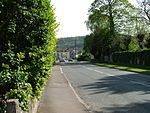Wycliffe College, Gloucestershire
Wycliffe College is a public school (co-educational, private, boarding and day school) in Stonehouse, Gloucestershire, England, founded in 1882 by G. W. Sibly. It comprises a Nursery School for ages 2–4, a Preparatory School for ages 4–13, and a Senior School for ages 13–18. In total, there are approximately 800 pupils enrolled at the school. The college is set in 60 acres of land. In 2018, The Duchess of Gloucester officially opened a new £6 million boarding house named Ward's-Ivy Grove. The college attracts students from many areas of the world. Wycliffe is a member school of The Headmasters' and Headmistresses' Conference (HMC). The Good Schools Guide stated that Wycliffe is "A school which offers a way of life as much as an education...A real gem of a school." The Independent Schools Inspectorate rated Wycliffe as either Excellent in all areas in its most recent inspection (March 2023).
Excerpt from the Wikipedia article Wycliffe College, Gloucestershire (License: CC BY-SA 3.0, Authors).Wycliffe College, Gloucestershire
MST26,
Geographical coordinates (GPS) Address Phone number Website External links Nearby Places Show on map
Geographical coordinates (GPS)
| Latitude | Longitude |
|---|---|
| N 51.743611111111 ° | E -2.2797222222222 ° |
Address
Wycliffe College
MST26
GL10 2JQ
England, United Kingdom
Open on Google Maps










